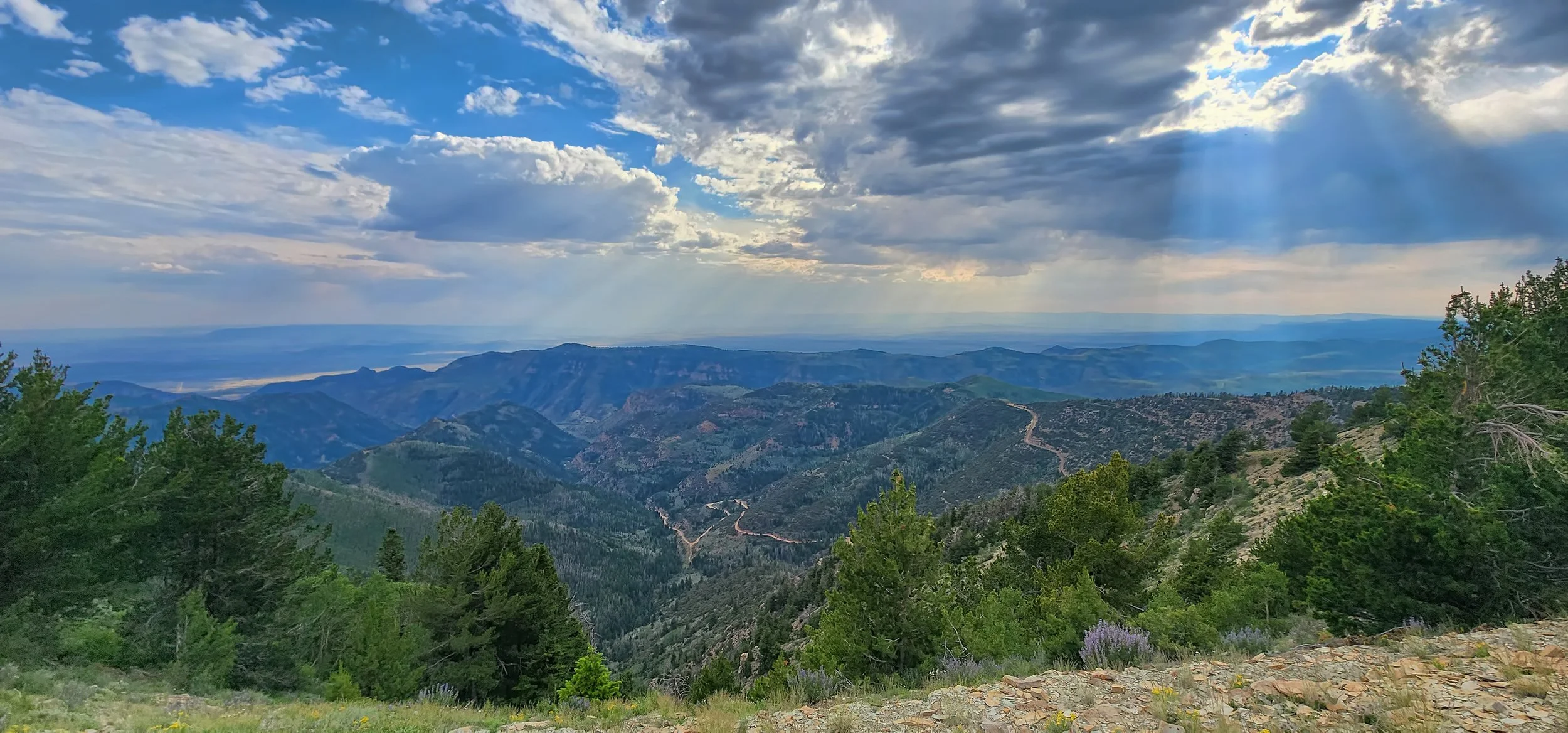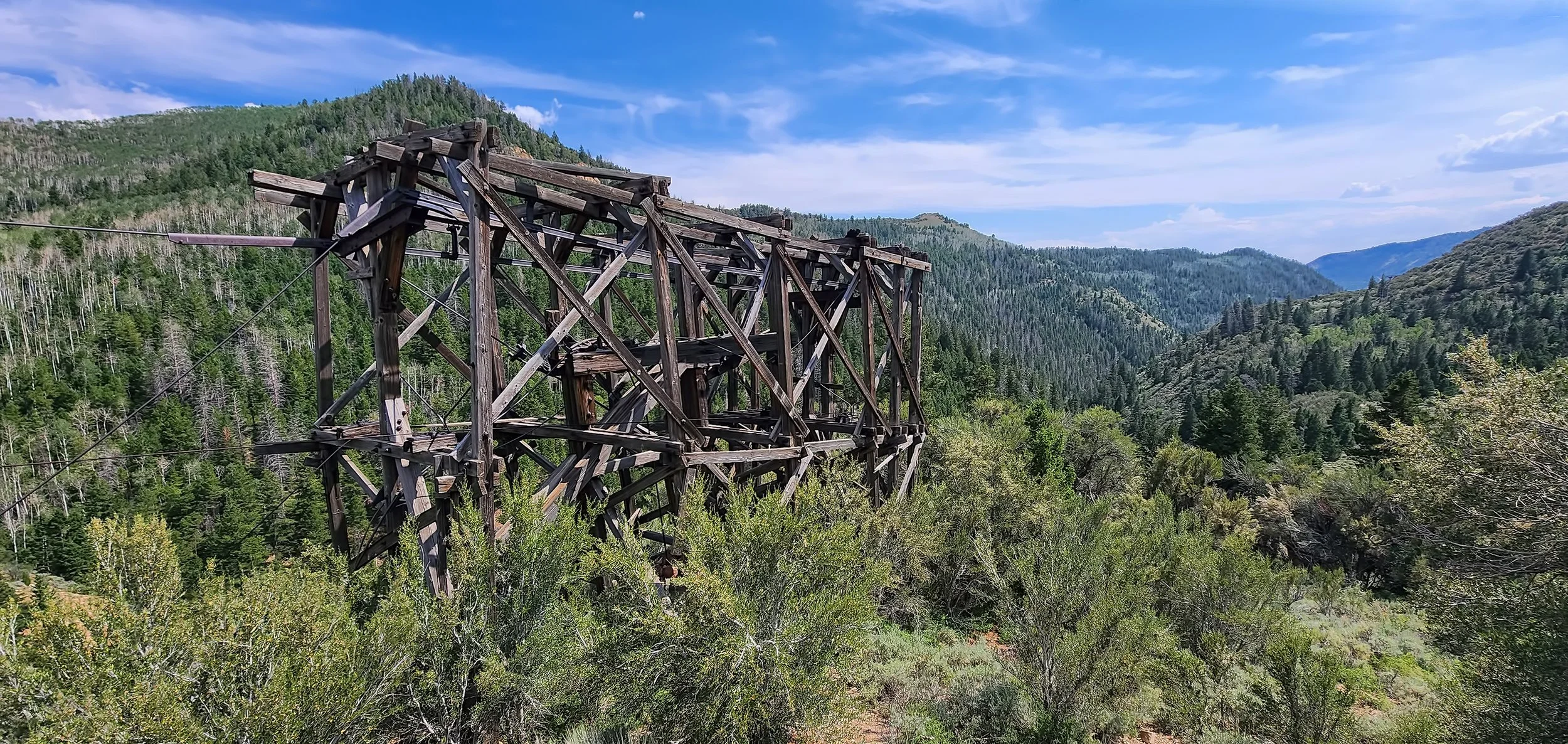met for lunch at our favorite Mexican restaurant last week. Emeritus Professor Ernest Gilmour (below left) was the chair of the department when I was hired as a fledgling assistant professor in the summer of 1984, a full 40 years ago, and he remains a good friend and valued colleague. We’re both retired from the university today, but he’s still doing active research in paleontology and publishing on bryozoans. It’s a scientific fact that fossilization is delayed if one stays active, both mentally and physically!
Getting the underside of the wings washed...
during an opportunistic bath in the sprinkler spray. It’s a poorly lit image but the behavior was fun to observe.
Soggy Black-chinned Hummingbird (Archilochus alexandri).
A broad range of habitats...
is enjoyed by this hummingbird, from the high desert of Utah to the high country of Colorado, to the ponderosa pine forests of eastern Washington and beyond.
Black-chinned Hummingbird (Archilochus alexandri), either a female or immature male.
The northern rocket arsenal...
is ready to fly, but with all the burn bans currently in effect in eastern Washington that’s not going to happen anytime soon. The HV Arcas model rocket will be used to obtain my Level 1 certification from the National Association of Rocketry at an event later this month. I’m leveling up to higher power rocketry. It’s important to pursue goals in retirement.
Link to Sod Blaster 2024 and the Level 1 Certification Process.
Setting out a hazard cone...
as an assist to a slowly moving turtle crossing the Fish Lake Trail this morning. Always happy to help my reptilian friends.
Painted turtle (Chrysemys picta) galloping across the trail.
Waiting patiently for a meal...
at dinnertime.
Great Horned Owl (Bubo virginianus).
Two healthy chicks occupy the nest...
of this Osprey who clearly has a bead on me as I capture this image of the siblings. The smaller chick was quite vocal, and with two youngsters, I can understand why the house is a mess.
Adult Osprey with two juveniles (Pandion haliaetus).
Shot this afternoon with a tripod-mounted Canon 5D Mark IV camera and Canon EF 500 mm f/4 prime lens from 120 yards (~110 meters).
Behind the mask...
there often clings a tiny sleeping bat. One or more are typically present when I need to retrieve my hidden house key during the summer. Delightful.
Little brown bat (Myotis lucifugus).
At least 40 noses...
are peeking out from the bottom of the bat house as the residents enjoy a pleasant day following a several day long heat wave. They’re wondering why the blood doesn’t rush to my feet as I snap this image.
Little brown myotis (Myotis lucifugus).
A juvenile fish hawk in the nest...
with a vigilant parent standing guard in Turnbull National Wildlife Refuge. Seems like some housekeeping is in order.
Adult Osprey with juvenile (Pandion haliaetus).
A properly constructed bat house...
must also be sited appropriately for bats to find and occupy. Bats are fiercely loyal to favorable roosts and will return year after year as the colony grows in number. This two-chambered bat box has been hanging in this location above my back deck, on the south side of the house, for nearly 20 years. Today more than 200 little brown bats (Myotis lucifugus) occupy it during the summer, some even giving birth.
Benefits: Fewer insects around the house and each year I gather several pounds of nitrogen-rich bat guano and give to my gardening friends. Sitting on the back deck at dusk and watching them emerge is pretty cool, too.
Hang a bat house. Bats need friends!
This is the volume of guano produced by the occupants of the bat house over the last several months, a clear indication of a large and healthy colony of bats.
My dear late wife, Donna Hensley, was a bat biologist and she compiled the first editions of this authoritative book while working at Bat Conservation International: The Bat House Guide.
My big buddies are back...
to welcome me home to the shaded ponderosa pine forests of eastern Washington. I love these huge, winged tigers of the sky.
Great Horned Owls (Bubo virginianus).
A mirror calm surface...
on Fish Lake. It’s surprising that nobody was out on the lake this early morning.
An unroofed hydrocarbon trap...
occurs below Bruin Point, Utah in the Green River Formation (Eocene) due to canyon erosion, thereby allowing the volatile compounds to freely migrate to the surface with only bitumen remaining in the sandstone.
View toward the west from Bruin Point, Utah (10,131 feet (3,088 meters)) into Water Canyon. The access road is exceptionally steep and requires a high clearance vehicle.
Block of asphaltic sandstone from the Green River Formation that was quarried below Bruin Point in the early 1800s.
Gravity-powered aerial tramway relic below Bruin Point, circa 1920s.
Here’s a link for geo-nerds: Sunnyside bitumen-impregnated sandstone reservoirs at Bruin Point, southwest Uinta Basin, Utah.
The Colorado state flower...
in full resplendent beauty.
Rocky Mountain columbine (Aquilegia caerulea).
The La Garita Caldera...
is the site of one of the largest volcanic eruptions in Earth’s history approximately 28 million years ago (Eocene). That enormous geologic event has left quite a bruise on south central Colorado and also created rich mineral deposits in the region.
Oblique aerial view towards the north showing the 20 mile wide (32 km) La Garita Caldera structure from Google Earth. Snowshoe Mountain is a resurgent dome in the core of the caldera.
The upper Rio Grande Valley on the western side of the La Garita caldera.
Much of the valley bottom is mantled with glacial till in terminal and lateral moraines and with glacial outwash.
Bristol Head mountain stands at 12,712 feet (3,875 meters) high with a smaller resurgent dome on the left.
Caldera-filling sedimentary rocks of the Creede Formation (Oligocene) near Creede, Colorado reflecting a lacustrine environment of deposition.
It's hummingbird heaven...
in the high country of Colorado.
Adult male Broad-tailed Hummingbird (Selasphorus platycercus).
Broad-tailed Hummingbird (Selasphorus platycercus).
Male Rufous Hummingbird (Selasphorus rufus).
Female Rufous Hummingbird (Selasphorus rufus).
Hanging out in the high country...
with a buddy from graduate school at a guest ranch near Creede, Colorado. Here are several of the local residents.
Our remote cabin for the week at about 9,200 feet (2,800 meters) in elevation.
Greater Scaup (Aythya marila).
Tree Swallow (Tachycineta bicolor).
Golden-mantled ground squirrel (Callospermophilus lateralis).
Milky Way over Molas Pass...
in the high country of Colorado last night at 11,100 feet above sea level. It was certainly quite chilly around midnight when this image was captured.
Snowdon Peak (13,077 feet) and the Milky Way reflected in Little Molas Lake. Look closely above the galactic core and you’ll spy a short meteor trail.
The subalpine scene at sundown.
Happy Independence Day...
Red, white and blue fireworks above Rapid City, South Dakota on the 4th of July 2018.




































